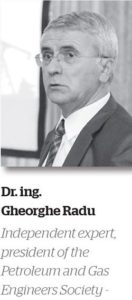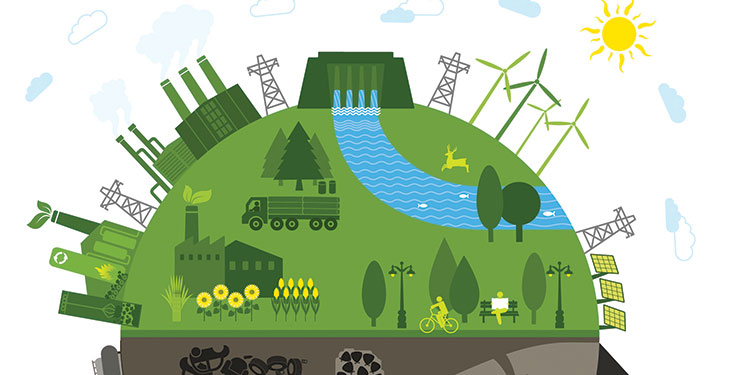At European level, especially in developed countries in Western Europe, the primary energy resource have become more and more reduced, which lead to an important and prevalent concern with regards to importing said resources from the outside, from bordering areas such as the Russian Federation, the Middle East, Northern Africa, which have over 70% of the natural gas and oil resources.

We have to keep in mind that no energy source is ideal! (fig. on page 3) At global level, the main primary energy source remains oil (35%), which is highly used in transport, but raises concern from both the perspective of greenhouse gas emissions and that of the capacity to cover demand. Coal, with a share of 29% in the global consumption, is another generously available source, but is highly pollutant, and storage solution for carbon are very expensive and have not yet proved their economic viability. Natural gas resources are generous as well, however not everywhere. Their transport from the extraction point to that of consumption is costly, be it in terms of pipelines, or in terms of liquefying (LNG). Natural gas is less pollutant than coal (half the CO2 emissions), and the power plants operating on natural gas are efficient, simple and in-time tested solutions. Nuclear covers only 5% of the global energy need, the cost of a plant is five times higher than that of a plant running on gas, and the development duration is very high. Finally, with a global contribution of 7%, the renewable resources imply high costs (wind, solar) and a high environmental impact for large hydroplants. Additionally, wind and solar do no allow for in-band production, but introduce high levels of volatility into the system.
The security of energy supply to users is conditioned by long and medium term policies and strategies which must be implemented keeping in mind the key elements specific to each country, including the investment costs specific to each type of resource. Plants running on natural gas are far from being the most efficient from this point of view. (fig. on page 4)
Furthermore, the safety and continuity of the entire technological chain must be kept in mind: source – transport network – warehouses, as well as the status of the distribution – supply networks, the impact upon the environment and the implementation duration of the projects.
UNECE-WPG – a uniform approach
The provisions under EU directives (No. 30/1998 -› 54/55/2003 -› 73/2008) have evolved from a recommendation to that of imposition, which has lead to a over-regulation with a negative impact on the development of energy sources, transport networks, storage warehouses and distribution networks. The promoting strategies and policies of different primary energy sources (solid, liquid, gas fossil fuels, uranium, renewable) must be done in a transparent manner based on well founded analyses, which would aim at criteria applied in a uniform manner, amongst which:
- investment costs / efficiency
- abundance (sourced in sufficient quantities)
- accessibility / affordable character
- acceptability (acquisition price)
- impact on the environment (underground, on the surface and atmosphere)
Such an integrated approach is offered by the United Nations Economic Commission for Europe – the Natural Gas Work-group (UNECE-WPG) which starting with 2009 promoted The United Nations Framework Classification (UNFC) of all categories of fuels and renewable energy resources based on common evaluation criteria. This classification has three evaluation axes (geological axis – environment, investment axis and commercial axis), through which the promotion of these resources within the energy circuit is evaluated, depending on investment efficiency (volumes and production made/marketed), operation (market) and impact upon the environment.
Natural gas – a resource for slow energy transition
In our opinion, the re-examination of this promotion of renewable resources is imperative from the point of view of subsidizing, priority and unlimited access especially to the periphery of the electricity transport system, as to avoid congestion and black-outs.
Concurrently, there is need to reevaluate taxes (elimination of over-taxation) of producers of energy from primary fossil sources (coal, crude oil and natural gas) which apply modern non-pollutant technologies (for example CCS).
Finally, a third recommendation refers to the re-examination of natural gas storage in underground warehouse, which gains new valences in the complex process of promoting energy from renewable sources. To be more precise, by completing the classic role of warehouses – balancing the seasonal variations (summer – winter), daily (day – night) and hourly variations – underground storage finds its strategic role as reserve for the national transport systems for natural gas and electricity consolidated.
—————————————-
This article firstly appeared in the printed edition of energynomics.ro Magazine, issued in December 2017.
In order to receive this issue of energynomics.ro Magazine, we encourage you to write us at office [at] energynomics.ro to include you in our distribution list. All previous editions are available HERE.
